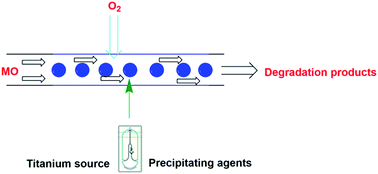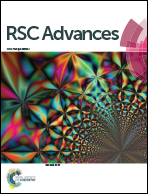Continuous synthesis of a co-doped TiO2 photocatalyst and its enhanced visible light catalytic activity using a photocatalysis microreactor†
Abstract
Three kinds of co-doped TiO2 nanomaterials were synthesized by using a continuous precipitation method with a valve assisted micromixer in the presence of additives and titanate sources. The research results revealed that co-doped elements were incorporated into the lattice of TiO2 by substituting Ti and O atoms in the lattice of TiO2. Compared with conventional methods, the substitution process was realized within a few seconds. The resulting nanoparticles were characterized by X-ray diffraction (XRD), differential scanning calorimetry (DSC), transmission electron microscopy (TEM), selected area electron diffraction (SAED), nitrophysisorption measurements, X-ray photoelectron spectroscopy (XPS) and diffused reflectance UV-visible spectra (DRS). The synthesized samples were evaluated in the degradation of methyl orange dye (MO) under UV and visible light irradiation at room temperature. Fe, S co-doped TiO2 (TiO2–Fe–S) showed nearly the same catalytic efficiency compared with pure TiO2 (5–10 nm) under UV irradiation. The visible photocatalytic activity was higher than pure TiO2 (5–10 nm) under visible light irradiation.


 Please wait while we load your content...
Please wait while we load your content...